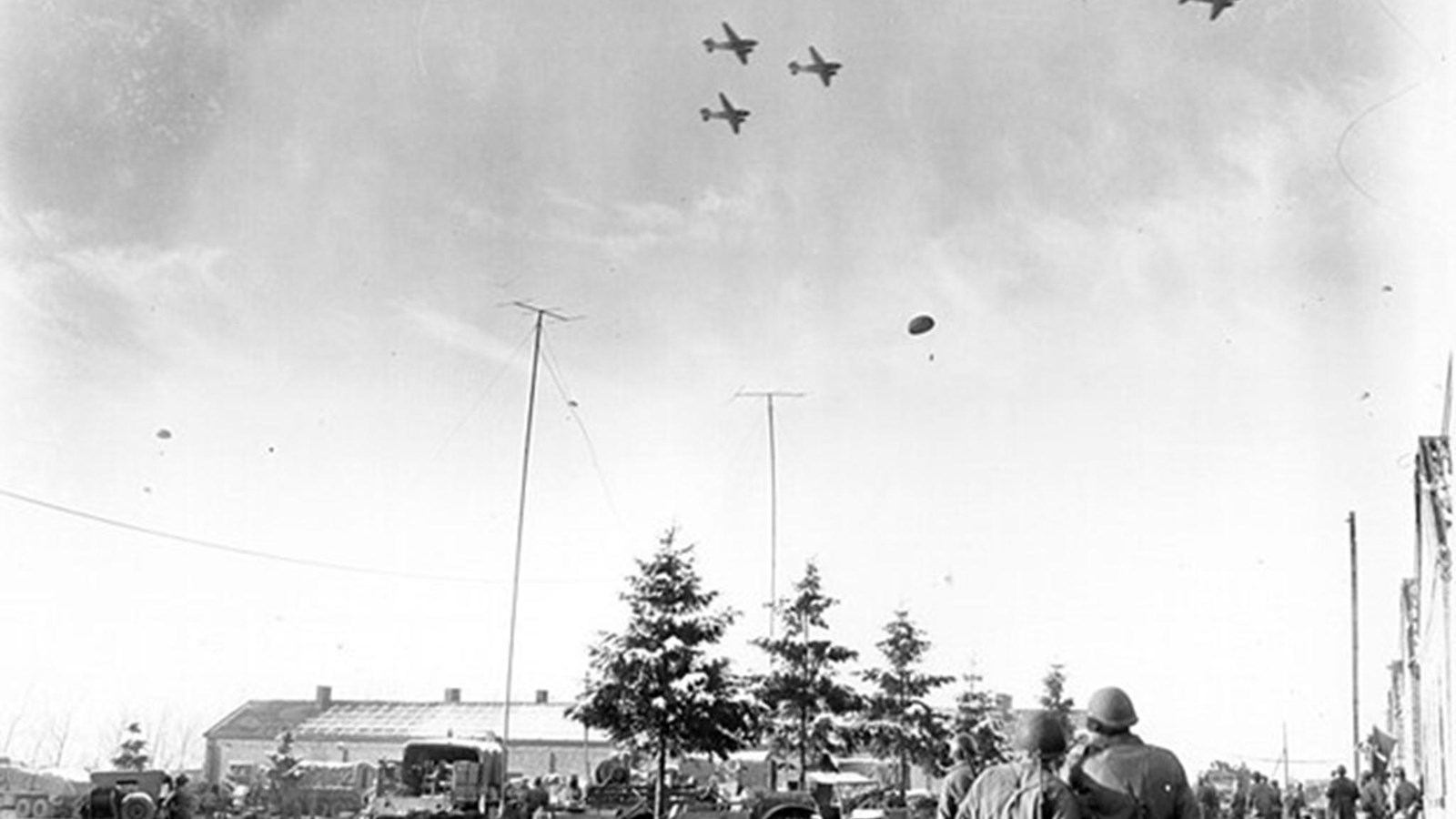Last updated: June 8, 2025
Place
Battle of the Bulge

National Archives-U.S. Army Signal Corps photographer
As you walk along the fountain, you notice the engraved name of the Battle of the Bulge. In the summer of 1944, after the Allies pushed the Germans out of Normandy and back toward their own border, Hitler began planning a major offensive. By mid-September, he hoped to regain the strategic initiative in the West and pressure the Allies into accepting a negotiated peace.
A combination of factors, Allied overconfidence, thinly stretched American lines in the Ardennes (manned by inexperienced replacement troops), and harsh winter weather, led the Germans to launch a surprise attack in mid-December 1944. The freezing, snowy conditions also grounded the U.S. Army Air Forces, preventing air support against the advancing Germans.
On December 16, 1944, the Germans struck, creating a massive bulge in the Allied front lines, giving the battle its famous name. They pushed 50 miles deep across an 85-mile front, but the Americans mounted fierce resistance, adapting quickly and surprising the Germans with their tenacity.
The battle raged for six weeks, becoming the largest and bloodiest single engagement fought by U.S. forces in World War II. By January 28, 1945, Hitler’s last major offensive in Western Europe had failed. The Allied victory not only shattered German momentum but also shortened the war by an estimated six months.
